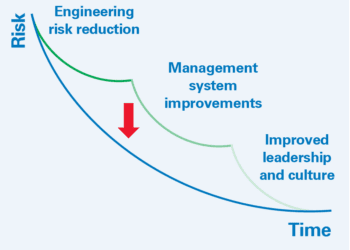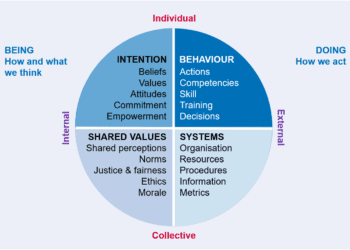Talking safety
Ten good practices for stakeholder communication throughout the safety case lifecycle

For any new facility with major hazards, a team of safety professionals is usually assigned the task of developing the safety case on behalf of the project manager. The stakeholders in this safety case are often many and varied. As well as internal stakeholders like designers, operators and senior management, there will be external stakeholders such as the regulator, the general public, partners, neighbours and activist groups.
When developing the safety case it is essential for the safety case team to recognise (and manage as appropriate) the expectations of all these stakeholders. To achieve this requires clear and regular stakeholder communication throughout the project. This article sets out ten good practices to realise this goal.
1. IDENTIFY AND UNDERSTAND STAKEHOLDERS
A simple exercise, which is often overlooked, is to identify all stakeholders and their role, and to put yourself in their position. How will they be affected and what are they expecting? This exercise should be undertaken at the start of each project phase.
2. WRITE DOWN AND AGREE A COMMUNICATION STRATEGY
Plan how you intend to engage with the different stakeholders you’ve identified. Write down your communication strategy and plan. What are the key messages? How will you communicate them? How will you know you’ve been successful? Who has to do it and by when? What are the priorities?
3. DEFINE WHAT INFORMATION IS REQUIRED
The safety case team needs to define what information is needed from which stakeholders. If the information isn’t available it may be possible to determine how to proceed (e.g. agree assumptions) whilst the information is being generated.
4. SHARE INFORMATION, KNOWLEDGE AND EXPERIENCE
The whole team must be open to sharing. Information should cascade down and bubble up. When people feel informed they are more likely to be advocates. In a good project, the project aims take precedence over personal or parochial views.
5. COMMUNICATION SHOULD BE UNAMBIGUOUS AND TWO-WAY
Colleagues must both speak and listen. Listening, understanding and retaining information is potentially the most difficult behaviour for experienced engineers to demonstrate. As the author Stephen Covey highlighted, one of the seven habits of highly effective people is to “Seek first to understand, then to be understood.”
6. AVOID UNNECESSARY JARGON
The language of safety cases is often overly-complicated and full of jargon that makes them difficult to understand. Safety cases need to be written for the benefit of the reader, not the writer. As William Penn, the founder of Pennsylvania, put it, “Speak properly, and in as few words as you can, but always plainly; for the end of speech is not ostentation, but to be understood.”
7. SET REALISTIC AND ACHIEVABLE PROGRAMMES
The safety case programme needs to explicitly reflect the design and review milestones. The right safety studies have to be done at the right times. The safety case team needs to understand and communicate its role in the programme and the iterations required to arrive at an optimal solution.
8. COMMUNICATE CHANGES CLEARLY TO STAKEHOLDERS
This is a two-way process. Designers may modify the design to enhance the facility’s production or reduce cost but inadvertently increase the risk, whereas the safety case process may propose changes to reduce risk but to the detriment of production. Whatever the source, changes must be clearly communicated and assessed, and judgements made on the optimal solution.
9. AGREE AND APPLY REALISTIC STANDARDS
In a goal-setting regulatory regime there is often a temptation to try to be “leading edge.” This can either ratchet up standards for future projects, or be impossible to achieve in reality. Agree realistic standards up front.
10. COMMUNICATE REGULARLY AND CONSISTENTLY WITH EXTERNAL STAKEHOLDERS
Successful organisations prioritise the messages they wish to communicate. Experience has shown that the more often external stakeholders are in contact with an organisation, the more favourable they tend to be.
CONCLUSION
These suggestions are hardly revolutionary, but could mean the difference between project success and failure. As the playwright George Bernard Shaw once said, “The single biggest problem in communication is the illusion that it has taken place.”
This article first appeared in RISKworld Issue 24








